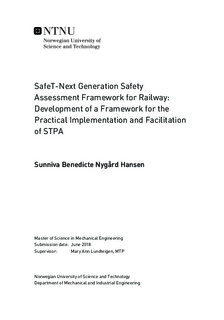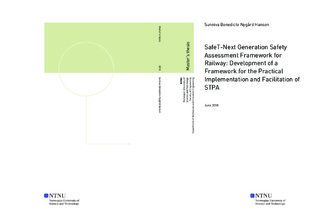| dc.description.abstract | In this thesis, a systems-theoretic process analysis workshop has been planned and conducted in order to see if the method is advantageous to use at complex systems, and if the analysis reveals more hazardous scenarios than the traditional hazard identification methods. The results from the systems-theoretic process analysis workshop were used to create a framework for the practical implementation and facilitation of the method. In addition, the systems-theoretic process analysis-security methodology was studied in order to figure out how to include dangers associated with information and communication technology security in a systems-theoretic process analysis review.
The results obtained from the systems-theoretic process analysis workshop included 44 unsafe control actions that may put the system in a hazardous state where accidents occur. On the basis of these, the systems-theoretic process analysis identified 8 remaining unsafe control actions after considering safety barriers. The traditional hazard identification methods used were a hazard and operability study and a failure modes and effects analysis. The hazard and operability study identified 4 hazards, which were equivalent to 9 of the unsafe control actions identified in the systems-theoretic process analysis. The failure modes and effects analysis identified 8 failure modes, which were equivalent to 14 of the unsafe control actions identified in the systems-theoretic process analysis. Consequently, the systems-theoretic process analysis identified more unsafe control actions than the traditional hazard identification methods, and thus proved advantageous to use at complex systems.
The systems-theoretic process analysis framework was inspired by already existing frameworks used for hazard identification, and based on input from experts, the systems-theoretic process analysis workshop, and literature research. The final framework displays inputs and outputs, as well as ten main steps that describe the approach for conducting a systems-theoretic process analysis workshop. The steps in the framework are divided into a planning or preparation phase, an execution phase and a post work or follow-up phase.
The essential hazard identification tool used for the systems-theoretic process analysis was the control loop. The control loop, which lays the foundation for the whole analysis, fulfilled all the requirements to models given by Bane NOR, and therefore proved to be a suitable model structure for hazard identification. | |

